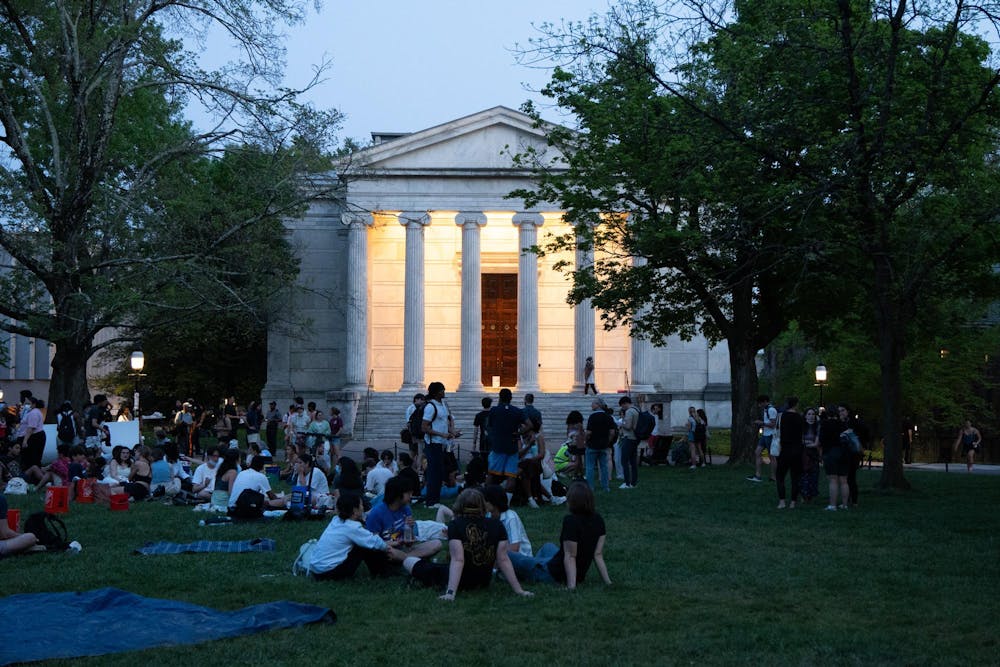The following is a guest contribution and reflects the author’s views alone. For information on how to submit a piece to the Opinion section, click here.
The May 3 faculty letter calling for VP Calhoun’s resignation argues that in her April 30 email to Princeton undergraduates about the April 29 takeover of Clio Hall, Vice President Calhoun gave not only an incorrect, mistaken, or misinformed description of the events, but also one that was purposely deceptive. Not satisfied to demand her preemptory firing, the faculty letter concluded with the hyperbolic claim that Calhoun’s leadership is “the real threat to the Princeton University community.”
Contrary to the faculty letter’s accusation, Calhoun’s account did not state that the protesters were “violent.” It did state that Clio Hall staff “found themselves surrounded, yelled at, threatened, and ultimately ordered out of the building.” And Calhoun’s 42-word description did not explicitly reference sources for her information.
In joining a letter firmly based on a questionable factual narrative, some 10 percent of Princeton faculty have rushed to condemn Vice President Calhoun for a “lie” and to demand her ouster. In “Looking Back on the Spanish Civil War” George Orwell recalled the far too-willing adoption of false battle reports by “eager intellectuals” of the day: “I saw newspapers in London retailing these lies and eager intellectuals building emotional superstructures over events that had never happened.” The signers of the faculty letter risk similar assessments of their discernment and judgment.
About Calhoun’s statement, the letter claims “this is a lie negated by the eyewitness account of the faculty observer who entered the building with the student protesters.” The eyewitness account that the faculty letter cites — written by professor Ruha Benjamin in response to the Calhoun statement — flatly opposed Calhoun’s version of events: “in short, what we witnessed inside Clio Hall bears no resemblance to VP Calhoun’s letter. No one yelled. No one made threats.”
Disarmingly, Benjamin described herself as “a non-participant faculty observer.” Two other sources, however, undercut her posture as a neutral narrator — and consequently undermine the reliability of the rest of her assertions. First, as the takeover progressed, protest supporter and professor Max Weiss, who did not enter Clio Hall, informed the cheering crowd outside that Benjamin — whom he referenced by name — along with 14 students had “occupied this building.” Second, according to The National Review’s Abigail Anthony ’23, “Professor Ruha Benjamin said with a megaphone from inside Clio Hall, ‘our students are here simply to gain a hearing.’” I leave it to the reader whether Benjamin is reliable in her descriptions of the events and her own role inside Clio Hall.
More information has become available that contradicts the faculty letter on the takeover. On May 1 and May 7, respectively, Vice Provost Cole M. Crittenden GS ’05 and President Christopher Eisgruber ’83 related their own discussions with unnamed Clio Hall staff, with Eisgruber stating: “I have also seen Graduate School staff break into tears when trying to describe the fright they felt when their building was occupied and surrounded, and when they locked themselves in offices because they believed they could neither safely remain nor safely exit the building.”
Regrettably, the faculty letter demonstrates no appreciation of two fundamental principles. First, the virtue of a demonstration being nonviolent does not free it from the constraints. Vice President Calhoun reported that the 11 students arrested at Clio Hall will face disciplinary proceedings by the University — perhaps, also, criminal charges by the authorities — and that similar fates may await “others who participated in [the Clio Hall] disruption.” These actions by the University align with President Eisgruber’s April 25 statement on the subject of campus protest and the University’s enforcement of its time, place, and manner rules: “[T]he enforcement of these rules is essential to our community…”

Second, mere invocation of the label “civil disobedience” does not justify the breach of any rule. As Professor Keith Whittington reminds us, “protests need to be stopped not only when they become violent but also when they interfere with the ability of others to use the campus for their own purposes.” George Mason Law Professor Ilya Somin observes: “Laws banning campus building takeovers and encampments, and protecting the freedom of movement of students are not unjust. . . . Trump backers cannot [break such takeover bans] to force the university to endorse claims that the 2020 election was “stolen” from Trump.”
The faculty letter does its readers a contemptible disservice in its wrongful purporting to have caught VP Calhoun in a “lie.” Ironically, to paraphrase the Connie Francis hit song, the letter inadvertently raises the question, “Who’s Lying Now?”
For this reason, many Princetonians have joined the May 3 petition I authored to President Eisgruber and other University leaders. We call for a full investigation to determine the facts concerning the Clio Hall takeover and to proceed with what sanctions — if any — are appropriate, not only for the students present but also for those four faculty members who entered Clio Hall. Were these four faculty members Pied Pipers of Princeton who facilitated a disruptive occupation inside Clio Hall and furthered students to a troubled end?
Perhaps the faculty letter’s central accusation arose from haste and the heat of the moment. Perhaps the accusation stems from an animus toward Princeton — in the words of the letter’s first signatory — to “tear down this place” and replace it.

In any event, the faculty letter’s authors could have cast light and added understanding on the real issues with the proper manner and scope of contentious advocacy and protest at Princeton. Instead, they muddle and mislead on the vital role of free expression at Princeton.
Bill Hewitt ’74 writes commentary on Princeton University at Tiger Roars. He can be reached at BillHewitt74 [at] gmail.com.








